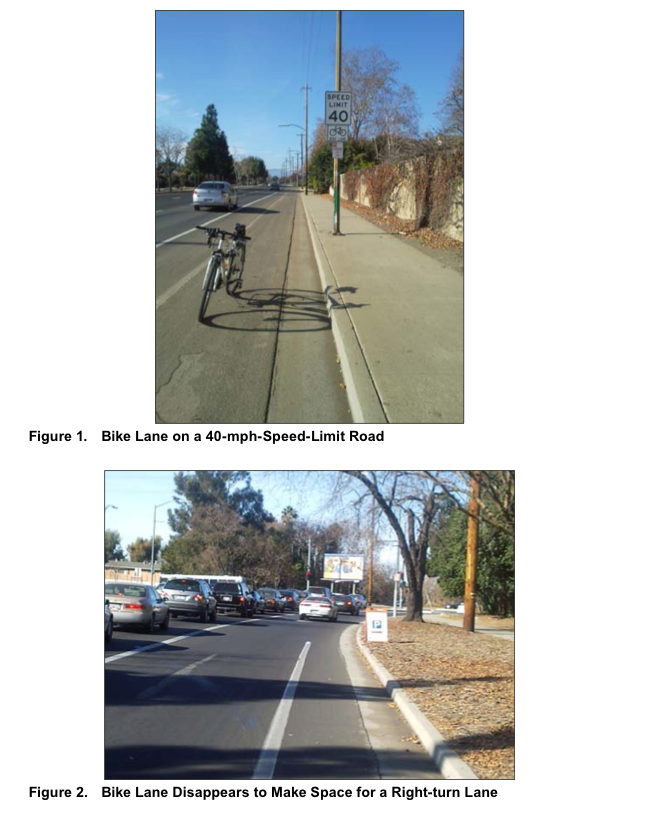MINETA TRANSPORTATION INSTITUTE
Introduction
OBJECTIVE 1: A USER-ORIENTED BICYCLING NETWORK DEFINITION
In one sense, a city’s or region’s bicycling network is all of its roads and paths on which bicycling is permitted. However, some streets provide such a poor level of safety and comfort for bicycling that the majority of the population considers them unsuitable for bicycling.
To make bicycling safer and more appealing, cities often make bicycle-related improvements to certain streets. They include bike lanes, shared lane arrows (“sharrows”), segregated bike paths or shared-use paths, signs indicating that a street is a bike route, traffic diversion devices to reduce through motor traffic while permitting through bike traffic, and traffic calming devices such as speed-cushions and neighborhood traffic circles. Because these improvements have been designed and installed by a city’s public works department (or equivalent), and have to be maintained by the city, it is natural that these facilities be inventoried. This inventory is often considered as a city’s bicycling network.
However, this “inventory definition” can deviate substantially from the network of paths and streets people deem safe enough to use. It will exclude many streets that have no bicycle-related improvements yet are perfectly suitable for bicycling by virtue of having low traffic speeds and volumes. It may also include “improved” streets that still subject cyclists to more traffic stress than most people are willing to accept. Examples include designated shared lanes on streets with traffic speeds of 30 mph or more, bike lanes in commercial areas where double parking and other commercial activities routinely force cyclists to merge into the travel lane, bike lanes on high-speed roads (Figure 1), and bike lanes that disappear on intersection approaches when the right travel lane becomes a right-turn lane (Figure 2).
Read full report (PDF) here: Low-Stress Bicycling and Network Connectivity
About Mineta Transportation Institute
transweb.sjsu.edu
“The Mineta Transportation Institute (MTI) conducts research, education, and information and technology transfer, focusing on multimodal surface transportation policy and management issues. It was established by Congress in 1991 as part of the Intermodal Surface Transportation Efficiency Act (ISTEA) and was reauthorized under TEA-21 and again under SAFETEA-LU. The Institute is funded by Congress through the US Department of Transportation’s (DOT) Research and Innovative Technology Administration, by the California Legislature through the Department of Transportation (Caltrans), and by other public and private grants and donations, including grants from the US Department of Homeland Security. DOT selected MTI as a National Center of Excellence following competitions in 2002 and 2006. The internationally respected members of the MTI Board of Trustees represent all major surface transportation modes. MTI’s focus on policy and management resulted from the Board’s assessment of the transportation industry’s unmet needs. That led directly to choosing the José State University College of Business as the Institute’s home.”







 RSS Feed
RSS Feed